As good a job as my parents did to teach their children to appreciate music―my mother introducing us to Beethoven, Chopin, and Mozart, La Boheme and Carmen, and Gilbert and Sullivan and my father playing on the stereo Paul Robeson, Glenn Miller, Mexican mariachi bands, and Polynesian singers―nothing prepared me for marrying into a family of musicians. Fabio’s mother, Cilia, plays the guitar, tiple, which is like a twelve-string guitar, and bandola, a four-string pear-shaped plucked instrument. She writes lyrics and musical scores. She sings. At her birthday party this week, I bit my tongue and forced open my eyes to stop tears from rolling.
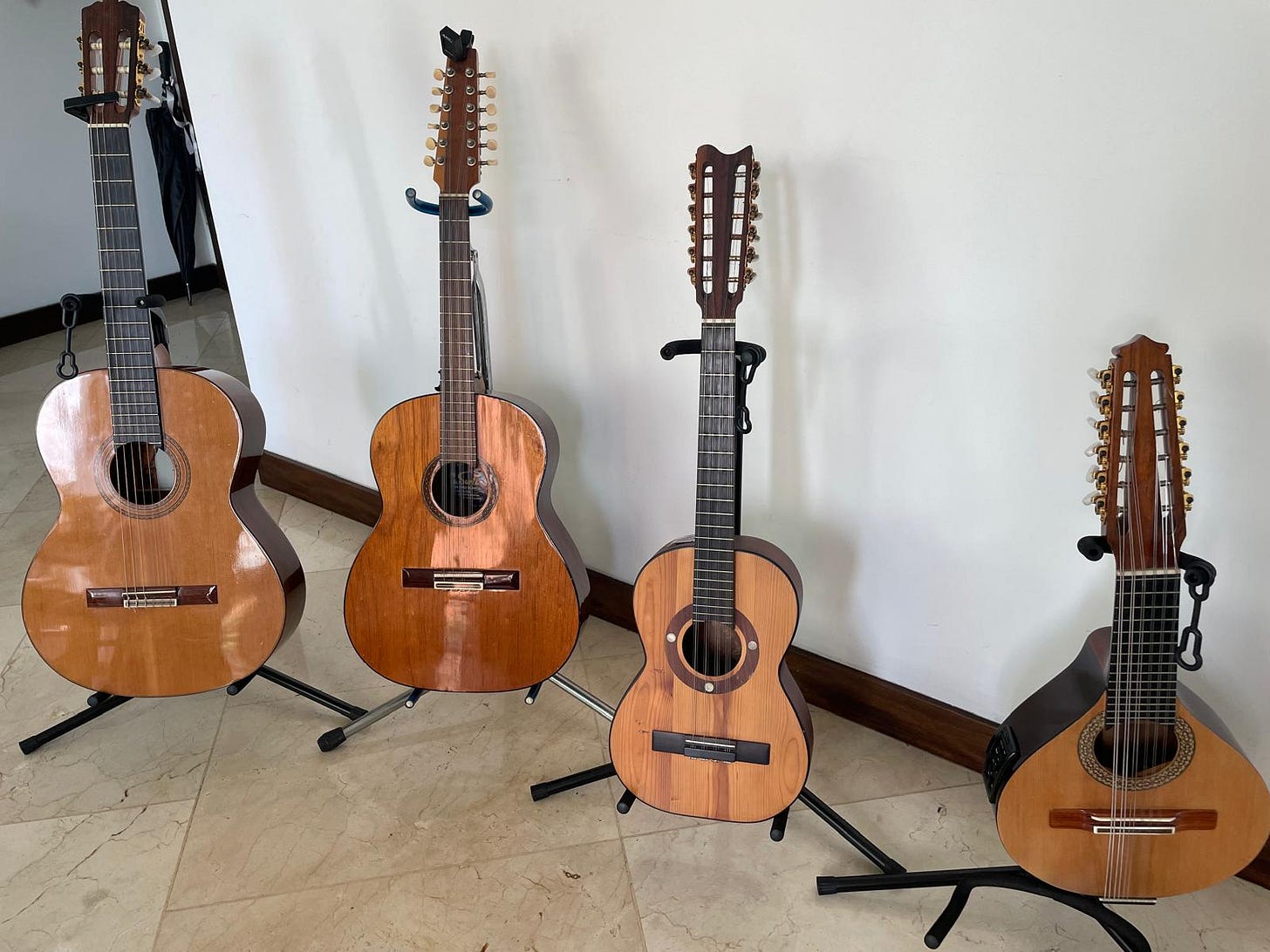
Sixty-five friends, family members, and participants in Cilia’s musical ensembles strolled into a clubhouse salon to celebrate another year into her eightieth decade. A bouquet of red, yellow, and orange gerbera daisies on each table set off linens and stemware. A program lay ready to guide guests through the performance. Three musicians tuned guitars and tiples. The soprano dabbed on the final touches of burning red lipstick and tightened her bun. The musicians, singer, Cilia, and Fabio’s sister Luz Diana ran through last minute details. They readied to present a gift Cilia had prepared: sixteen out of scores of songs for which she had written the lyrics and composed the notes.
The soprano stepped forward to sing the first song “Camino a España” (Road to Spain), a song Cilia had created on a trip to Cantabria in northern Spain when she vacationed in 2013 with our family. We stayed outside the village of Carriazo, where cows and sheep outnumbered neighbors. We drove along the coast and through the hills bright and grassy from the rains. We strolled through villages founded in the 1500s. This was the countryside Cilia had seen in Spanish movies as a girl when she dreamed of being as glamorous as the actresses and singers Carmen Sevilla and Lola Flores. She danced with castanets and wore a traditional Spanish veil just like her movie heroines. She watched gypsy flamenco dancers thrust across the big screen. She perched at her father’s side at bullfights in Bogotá. As an adult, her eyes swelled with the images of Spain just as they had done when she was little. One afternoon in Carriazo, she poured her memories into music.

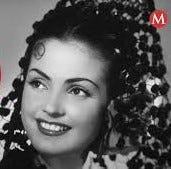


Camino a España, tierra cascabelera
De lindas tierras y mujeres bellas
Donde quiera que uno mira se respira
La alegría de su gente y su salero
Stanza from Camino a España, a pasodoble by Cilia Romero
Cilia wrote Camino a España as a pasodoble (double step). A pasodoble is a Spanish military march in which soldiers step 120 times a minute. A popular Spanish dance derived from this fast-paced strut. Orchestras often play songs to this beat at bullfights. In this dance, the leader plays the matador, the one who stabs and kills the bull. The follower takes the role of the matador's cape, his shadow, or a flamenco dancer.
The first time I heard a pasodoble I knew I was in over my head in this musical family. Two decades ago on a Sunday afternoon, friends and family gathered at Fabio’s parents’ weekend house in La Vega, a town near Bogotá. After guests had stuffed themselves on grilled chicken, blood sausage, pork rinds, and arepas (corn cakes), roasted potatoes, pork tamales, and avocado, they broke into singing and dancing on the porch. Fabio’s parents took to the floor for a pasodoble. After all that food, I don’t know how they moved their feet 120 times a minute or marched, circled, and swirled around pots and pillars of carnations, impatiens, and bougainvillea.
Fabio’s father didn’t resemble a matador. His gaze swept across family and friends clapping, swaying, and smiling to this Spanish tradition.
At Cilia’s birthday party, she and her companions who had participated in a musical group called a tuna performed several pasodobles. They formed a tuna in Bogotá and later in Medellín for the joy and tradition of singing Spanish melodies. In Bogotá and Medellín, Cilia and her tuna friends plucked their guitars, tiples, bandola and castanets, and serenaded the residents of homes for the elderly. They played at weddings and birthdays and in theaters and festivals. In Medellín, Cilia as president of the board of the tuna, organized the group’s events and had a hand in the music played.
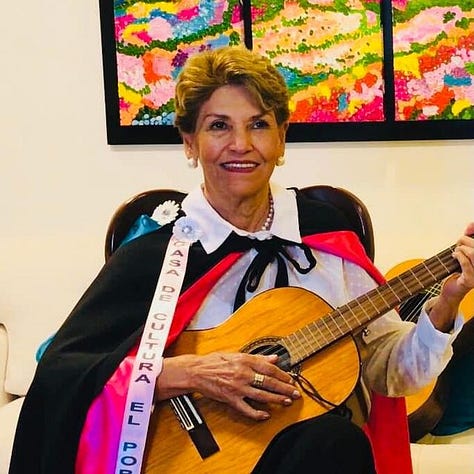
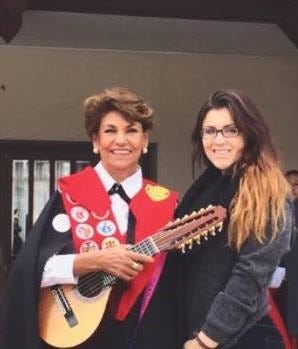

Originally, poor university students in Spain in the 13th or 14th century formed tunas to saunter from house to house singing and strumming guitars in exchange for soup (sopa boba) made of scraps from leftovers. They wore the attire of their university, including a tight-fitting jacket worn over a white shirt with big cuffs and a collar, breeches, tights, and shoes. They donned a long, loose cloak with no sleeves. At that point, only men participated in tunas because only men attended university.
Luz Diana, Cilia, and the soprano sang bambucos, corridos, boleros, zambas, and joropos, genres of music from Colombia and other Latin American countries. Spanish music creeps into the bambuco via the string instruments and structure of the melody. Corridos, originally from Mexico, are ballads that sometimes portray social issues reflecting the history between Spain and the New World. Each draws on Latin America’s indigenous, African, and Spanish roots that created its musical heritage.

For every song at her birthday, Cilia described her inspiration to compose it. La Vega. Her children and grandchildren. A peasant couple. Her late husband. Her tiple. The tuna in Medellín. Past loves.
I swallowed to get rid of the lump in my throat. My hand grazed over my eyes to blot the moistness. Cilia described each song as a gesture of love and joy to her family, and friends. I let the tears flow, honored to be part of this musical family. I will never master a pasodoble and the Camino a Espana may be long but it always brings me home to family in one direction or another.




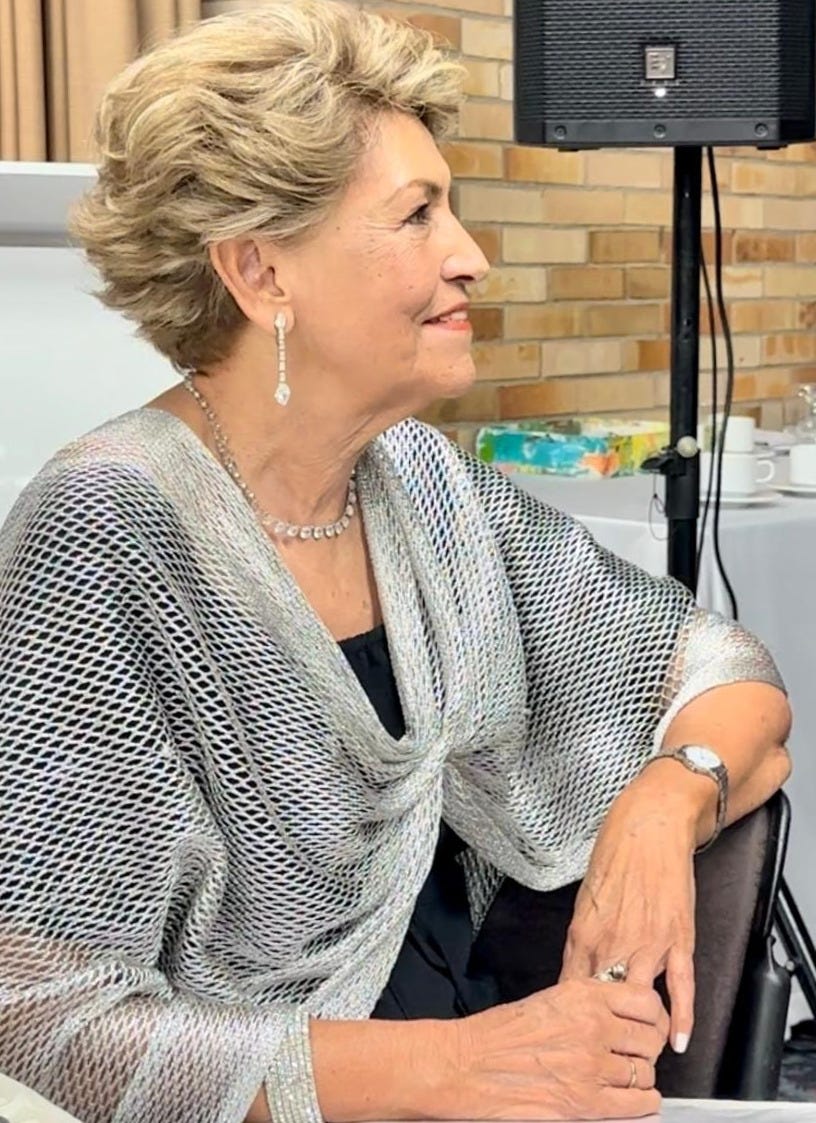
A late but heartfelt thought - just WOW!!! All of it, amazing. Thank you for sharing!
Gracias Andrea! Felicitaciones a Cilia por su cumpleaños y su genial habilidad musical, a Fabio por orquestrar la fabulosa celebración para honrar a su linda mamá, y a tí, Andrea querida, por hacer esta fiel radiografía! Yo me sentí, allá, en esa hermosa fiesta... y me gocé tu escrito, de comienzo a fin.
Qué talento poder componer canciones, de diferentes géneros... y además, cantarlas...!!!
Gracias por hacernos partícipes de esta ocasión, por las lindas fotos y por el cálido sentimiento!